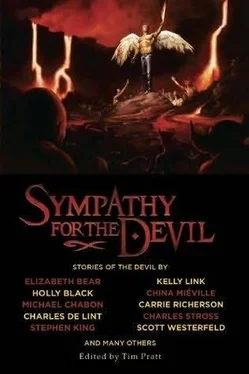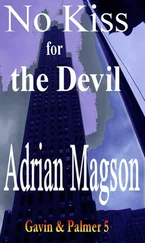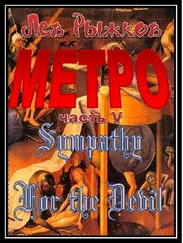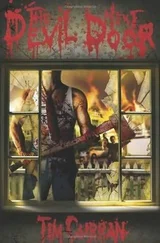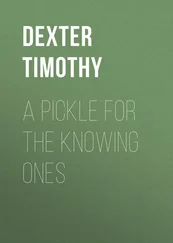‹is this some kind of sick joke?›
‹No, Harriet. Like I said, I got some work for you. $$$!›
‹who is this really?›
‹It’s ME! Listen. Who one else would know this: Remember that time when I got drunk at your apartment and we tried, but couldn’t?›
‹OK! OK! but you said you were comatose?›
‹Body on the slab. Soul in Hades.›
‹whoa. i get it now. you are dead, and you set up some sort of dead-man switch, like you always talked about.›
I winced when I saw these words. I had always claimed to have a dead-man switch installed deep in Falling Man’s system, in case the other partners decided to get rid of me. My story was that if I didn’t type in a special code once a week, my dead-man program would recognize my absence and activate, rampantly destroying all the company’s stored data. It was insurance, in case I ever found myself locked out of the office, or worse, cut out of the stock options. The truth was, however, I’d never bothered to implement the dead-man software. It was too much trouble. After all, as with nuclear weapons, a credible threat of massive retaliation was sufficient to maintain the peace.
Harriet continued:
‹so this is just some posthumous conversation program, designed to fuck with my head if you died. you programmed it to mention that time at my house. that is so nasty of you. was so nasty, I guess.›
‹No, this is ME, not some crappy chat software.›
‹prove it.›
‹A Turing Test? I reach out to you, asking for help from beyond the grave and you give me a FUCKING TURING TEST?›
‹ok. you just passed. only you would bring up a turing test while you were dead. geek.›
‹Thanks.›
‹now, you said something about a job?›
I briefed Harriet, explaining who the client was and what he wanted, but saying nothing about the payment plan. After our little discussion, I decided to wait until I was walking the earth again before I made any more hires. The last thing I needed was a load of people pestering me about the afterlife. I had that non-disclosure agreement to worry about, after all.
A few hours later, my eyelids started to flicker, and I found myself in the demimonde between an LA hospital room and my Hell cubicle. The Devil, like some gorgeous and jocular supervisor, came over to shake my hand and say goodbye.
“When do I get the Secret?” I interrupted.
“After delivery. Just don’t get hit by a bus before then.”
“I’ll be careful.”
“And don’t forget my little non-disclosure clause,” he added.
“Mum’s the word.”
He smiled cruelly at my show of confidence. I could see in his eyes that he fully expected me to fail, to spill the beans and wind up in his clutches for eternity. I started to say something brave.
But then the netherworld faded, and I was back. Bright lights, stiff bedclothes, and thundering unstoppably into my awareness: a world of pain. It turns out that even first-degree burns can take you to the extremes of agony.
I gurgled a scream, and flailed my arms. Someone grabbed my hand, and I heard a call for morphine.
So now I know what Heaven feels like, too.
Harriet and I did good work together.
For Hell’s new lava, we used a liquid motion package designed by these hydrofoil designers in Germany. Extending its parameters with a little code of our own, we set the lava’s viscosity to crazy-our lakes of fire hopped as lively as a puddle in a Texas hail storm. Cruel geyser heads lurked below the surface, periodically erupting to scatter a scalding mist upon the cruel abysmal wind. Harriet colored the lava an ominous dark red, texture-mapped with scanned photos of my still-scabby burns and run through with sinuous veins of eye-gouging electric crimson.
We decided to go fractal with the mountains. Each pointy crag was sharp enough to scratch a diamond, each lacerating jut of rock serrated with infinitely recessing edges-within-edges, razor-fine down to the microscopic level. You could cut yourself just looking at the stuff.
We also went fractal with the Styx 2.0, making it infinitely crooked, infinitely long. A boundless barrier between the mundane and the eternal.
Working alongside Harriet, I saw the project reflected in her eyes, their steely blue aglitter with the millions of reds in our perditious palette. My hand was always on her shoulder as we crouched over twenty-thousand-dollar monitors, and I felt the flutters of her soul in the taut muscles that extend from neck to mouse-arm. The hellish imagery turned her on, inflated her pupils like blobs of black mercury expanding in the heat of our virtual netherworld. She was hooked, transfixed, spitted by a primal sexual response to the visage of death.
She didn’t really believe in our diabolical client, I could tell. But the project manufactured its own verity, until the view in the monitor became as real for her as for those who would one day occupy it.
I had known the project would capture her. Harriet was one of those artists who instinctually resisted computers, only to be ultimately seduced by them. She loved her paints, but a stroke of pigment can’t be corrected. There are no RGB values to change, no pixels to nudge. You’re stuck with the happenstance of that moment, without an Undo command or even a backup file. And that’s a losing deal, it had always seemed to me. She always claimed that one day she’d foreswear the mouse and pick up her paintbrushes again, but the ability to tween and tweek was an irresistible siren. The algorithms that we geeks had used to colonize the screen had colonized Harriet as well.
It’s an old story. Religions start with a madman’s inspiration but end up with sensible canons and commandments. Barter systems are rationalized into the liquidity of cash and credit. Mythologies are repurposed as role-playing games. Communities are arrogated by IPOs. With the visual arts it took a while longer for the number-crunchers to take over, but eventually we always win.
Art may be pretty, but rule-governed systems rule.
Our biggest graphics challenge was hellfire, the ambient affliction of the damned. We needed something that would burn without devouring, a necessary provision for endless torment. But fire that doesn’t consume its fuel always looks wussy. It hovers over the burning victim like it was Photoshopped on post facto, about as scary as the disembodied and exaggerated blaze of charcoal sprayed with too much lighter fluid.
We brought in some programmers and created dozens of new algorithms from scratch. We watched videos of forest and brushfires, warehouse conflagrations, accelerant infernos, the oil-well holocausts of the Gulf War. I picked my scabs endlessly, looking for answers in that crumbling, itching flesh.
Finally, we hit paydirt in that old standby: napalm. When napalm consumes flesh, it burns its own sticky fuel, charring the body beneath as a secondary effect. Sprayed with fire extinguisher foam or submerged in water, it remains alight, attached to its victim, demonically implacable.
Vietnam-era video has its limitations, of course, so we checked out a few second-amendment websites and got the recipe. We concocted a small batch of napalm from soap flakes and kerosene, and headed out to the Jersey swamps, bringing along cow-hearts and a couple of raw pigs that we’d scored from a loading dock in the meatpacking district. We burned the whole grisly pile.
During the filming, I had a flashback to my near-death in California. Waves of heat came from the crackling flesh, and a stench not unlike the sulphurous reek of Hell.
I looked over at Harriet, who had dropped her digital camera to stare at the flames with naked eyes. Tears ran down her cheeks, streaking the soot that had darkened her face. She gazed back at me with horror. Harriet had treated the whole project as an enjoyable lark until now. Vanity graphics for an imaginary client, my personal fetish. But I could see that the level of detail was starting to get to her.
Читать дальше
